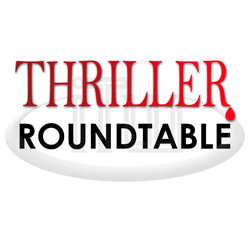

April 11th to 17th: “What can thriller writers learn from the movies?”
 Inception, The Bourne Ultimatum, Silence of the Lambs…
Inception, The Bourne Ultimatum, Silence of the Lambs…
Join ITW members Neil Plakcy, Charlie Cochrane, AM Riley, J. H. Bográn and Shane Briant as they discuss what thriller writers can learn from the movies!
As Charlie Cochrane couldn’t find any ‘classic age’ murder mysteries featuring a gay detective pairing (she refuses to count Holmes and Watson as partners in anything other than investigation), she decided to write her own. The eighth Cambridge Fellows Mysteries book from Samhain came out in e-book in February 2011. Charlie was named Author of the Year 2009 by the review site Speak Its Name.
Neil Plakcy is the author of Mahu, Mahu Surfer, Mahu Fire and Mahu Vice (August 2009), mystery novels which take place in Hawaii, as well as the collection Mahu Men: Mysterious and Erotic Stories. His M/M romance novels are GayLife.com (MLR Press, 2009), Three Wrong Turns in the Desert (Loose Id, 2009) and Dancing with the Tide (Loose Id, 2010). His mystery novel In Dog We Trust is available for all e-book readers through Amazon.com and Smashwords. He is co-editor of Paws & Reflect: A Special Bond Between Man and Dog (Alyson Books, 2006) and editor of the gay erotica anthologies Hard Hats (Cleis Press, 2008), Surfer Boys (Cleis Press, 2009) and Skater Boys (Cleis Press, 2010). Plakcy is a journalist and book reviewer as well as an assistant professor of English at Broward College’s south campus in Pembroke Pines. He is a member of Sisters in Crime, vice president of the Florida chapter of Mystery Writers of America, and a frequent contributor to gay anthologies.
As an actor, Shane Briant has starred in 35 films in the UK, USA, Australia, New Zealand and Europe. He has worked with 9 Academy Award winners. As a novelist, Shane has had 7 thrillers published, ‘The Webber Agenda,’ ‘ The Chasen Catalyst’, (Harper Collins) ‘Hitkids,’ ‘Bite of the Lotus,’ ‘Graphic,’ (Marburg Press) ‘ Worst Nightmares,’ (Vanguard Press) and ‘The Dreamhealer,’ (Marburg Press) His autobiography, ‘Always the BAD GUY,’ will be published in the UK soon. published in Australia, America and Germany.
J. H. Bográn, born and raised in Honduras, is the son of a journalist; he ironically prefers to write fiction rather than fact. José is the author of TREASURE HUNT, the first in the series of a professional thief that goes by the handle of The Falcon. Other works include short stories, contributor to The Big Thrill magazine, co-screenwriter for two TV serials and movie reviews for Honduran newspaper La Prensa.
- LAST GIRL MISSING with K.L. Murphy - July 25, 2024
- CHILD OF DUST with Yigal Zur - July 25, 2024
- THE RAVENWOOD CONSPIRACY with Michael Siverling - July 19, 2024
